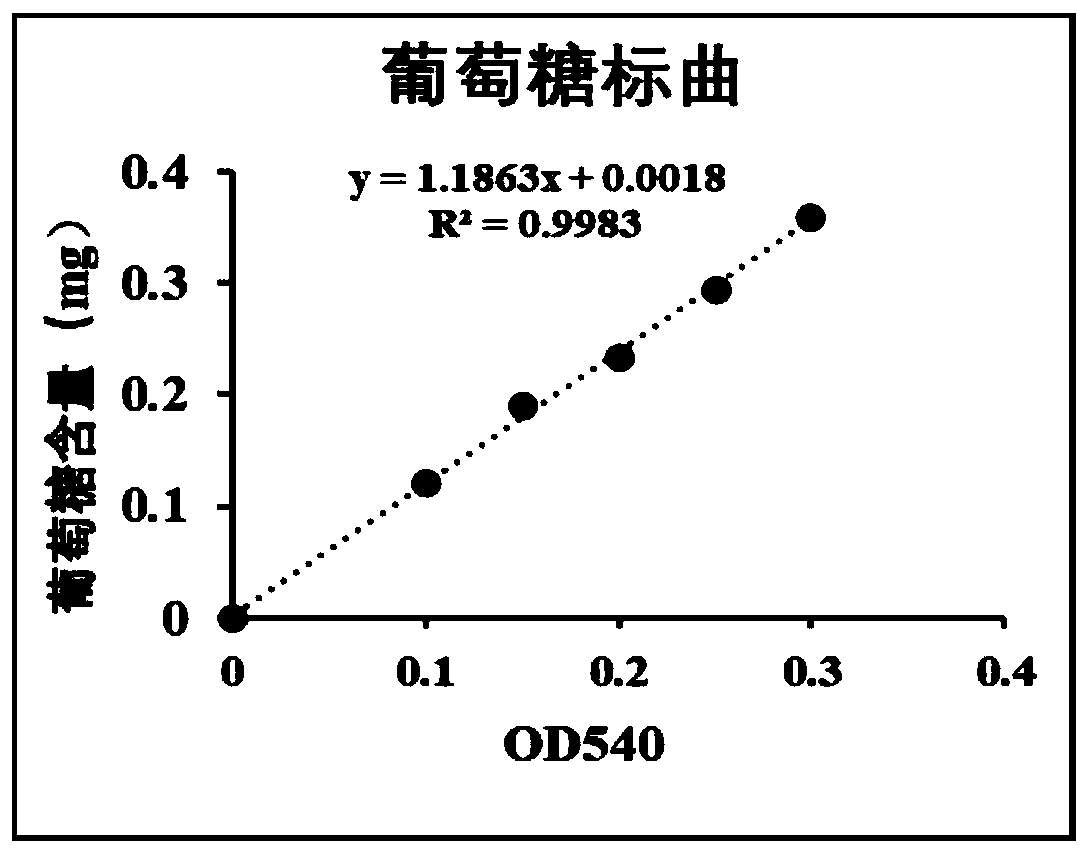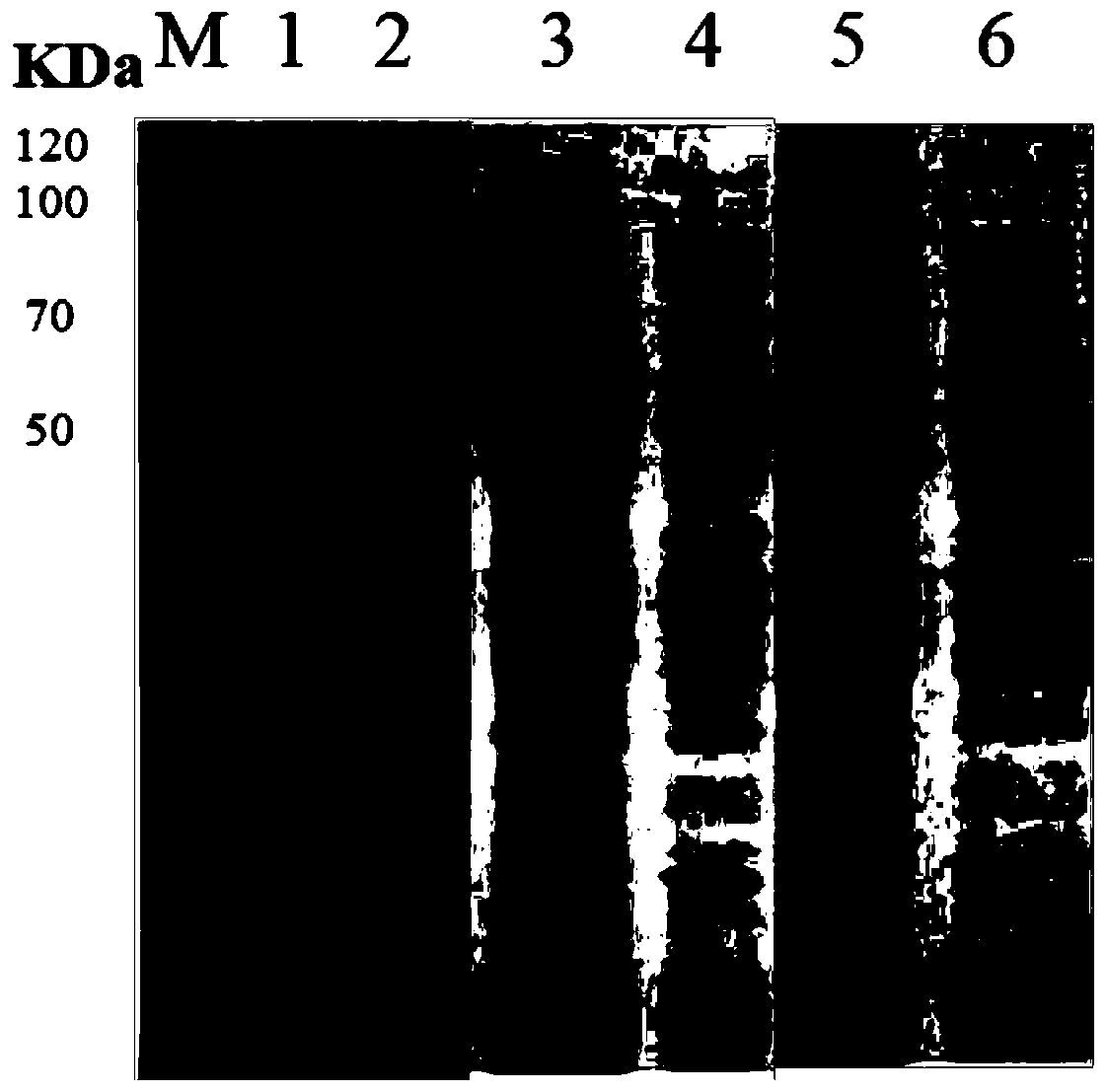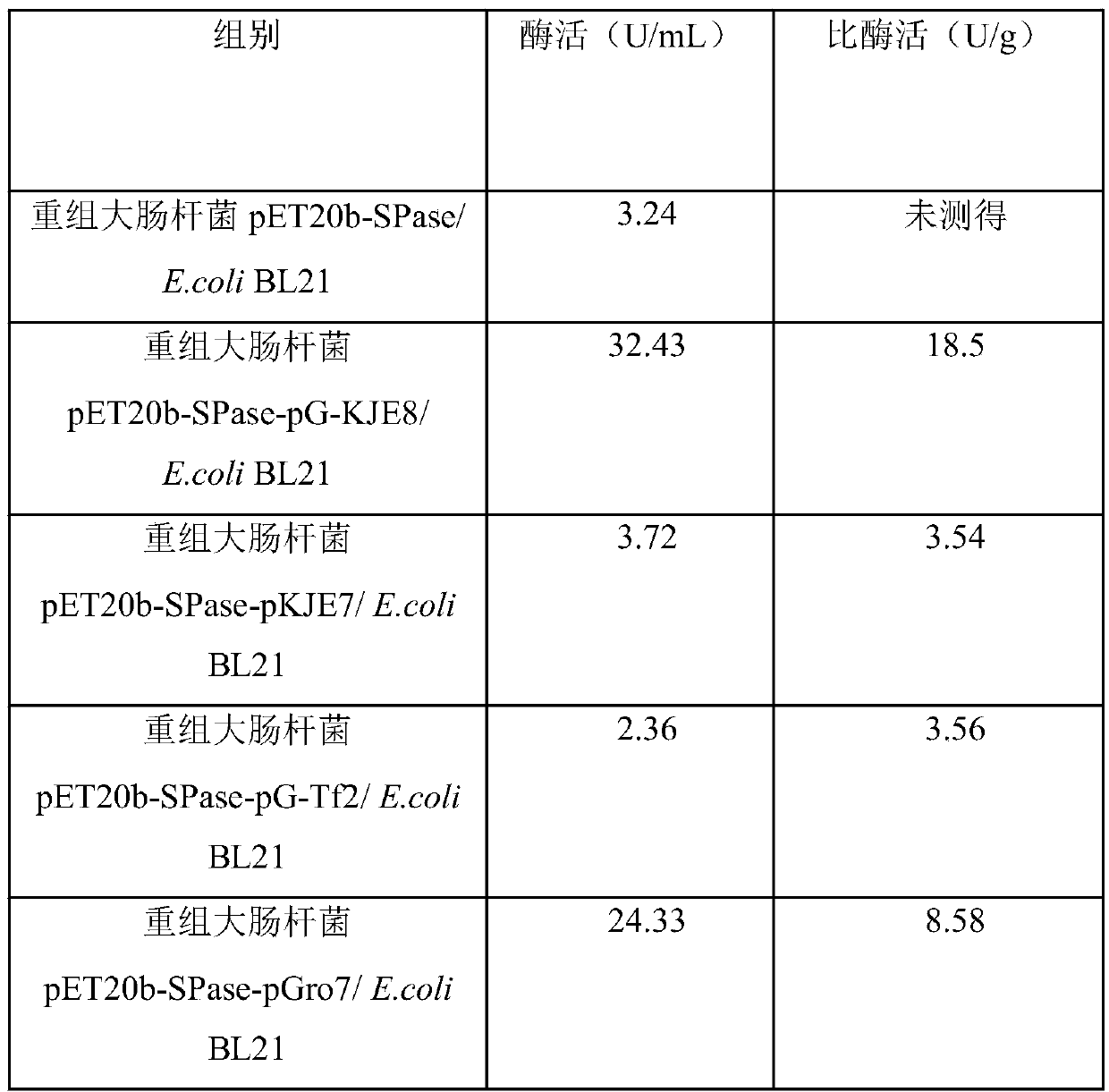Production method for sucrose phosphorylase and application of production method
A sucrose phosphorylase and a technology for producing sucrose, applied in the biological field, can solve the problems of low specific enzyme activity of sucrose phosphorylase, difficulty in meeting industrial applications, poor soluble expression effect, etc., and achieve high yield
- Summary
- Abstract
- Description
- Claims
- Application Information
AI Technical Summary
Problems solved by technology
Method used
Image
Examples
Embodiment 1
[0061] Example 1: Construction of different recombinant bacteria that can produce sucrose phosphorylase
[0062] Specific steps are as follows:
[0063] Chemically synthesize the gene (the nucleotide sequence of the gene is shown in SEQ ID NO.1) of the sucrose phosphorylase encoding aminoacid sequence as shown in SEQ ID NO.2; The gene obtained and pET-20b (+) plasmid pass Ligate after double enzyme digestion (Nco I and Xho I), transform the ligation product into Escherichia coli E.coli BL21(DE3), spread the transformed product on LB solid medium, culture at 37°C for 8-10h, and place on LB solid medium The transformants were picked from above, cultured in LB liquid medium, cultured at 37°C for 10 hours, and the plasmid was extracted. The plasmid was sequenced, and the recombinant plasmid pET20b-SPase and recombinant Escherichia coli pET20b-SPase / E.coli were obtained if the sequencing was correct. BL21.
[0064] The recombinant plasmid pET20b-SPase and plasmid pG-KJE8 (contain...
Embodiment 2
[0068] Embodiment 2: the production of sucrose phosphorylase
[0069] Specific steps are as follows:
[0070] The recombinant Escherichia coli pET20b-SPase / E.coli BL21 obtained in Example 1, the recombinant Escherichia coli pET20b-SPase-pG-KJE8 / E.coli BL21, the recombinant Escherichia coli pET20b-SPase-pKJE7 / E.coli BL21, the recombinant Escherichia coli Bacillus pET20b-SPase-pG-Tf2 / E.coli BL21 and recombinant Escherichia coli pET20b-SPase-pGro7 / E.coli BL21 were spread on LB solid medium and cultured at 37°C for 8-10 hours to obtain a single colony; Put the colony into the LB liquid medium, cultivate at 37°C for 12-14h, and obtain the seed liquid; insert the seed liquid into the LB liquid medium according to the inoculum amount of 1% (v / v), and cultivate at 37°C, 180rpm to OD 600 After reaching 0.8-0.9, add L-arabinose with a final concentration of 0.5g / L, tetracycline with a final concentration of 10ng / mL, and IPTG with a final concentration of 0.5mM in the culture medium, an...
Embodiment 3
[0074] Example 3: Effects of Arabinose and Tetracycline Concentrations on Sucrose Phosphorylase Yield and Specific Enzyme Activity
[0075] Specific steps are as follows:
[0076] Spread the recombinant Escherichia coli pET20b-SPase-pG-KJE8 / E.coli BL21 obtained in Example 1 on LB solid medium and culture at 37°C for 8-10 hours to obtain a single colony; pick a single colony and insert it into LB liquid culture cultured at 37°C for 12-14 hours to obtain seed liquid; the seed liquid was inserted into LB liquid medium according to the inoculation amount of 1% (v / v), and cultivated to OD at 37°C and 180rpm 600 After the concentration is 0.8 to 0.9, add L-arabinose at the final concentrations of 0.25g / L, 0.5g / L, 1.0g / L, and 2.0g / L to the culture medium, and the final concentrations are 5ng / mL and 10ng / mL, respectively. Tetracycline / mL and IPTG with a final concentration of 0.5mM were induced for 12 hours at 16°C and 180rpm to obtain a fermentation broth; the fermentation broth was c...
PUM
 Login to View More
Login to View More Abstract
Description
Claims
Application Information
 Login to View More
Login to View More - R&D
- Intellectual Property
- Life Sciences
- Materials
- Tech Scout
- Unparalleled Data Quality
- Higher Quality Content
- 60% Fewer Hallucinations
Browse by: Latest US Patents, China's latest patents, Technical Efficacy Thesaurus, Application Domain, Technology Topic, Popular Technical Reports.
© 2025 PatSnap. All rights reserved.Legal|Privacy policy|Modern Slavery Act Transparency Statement|Sitemap|About US| Contact US: help@patsnap.com



